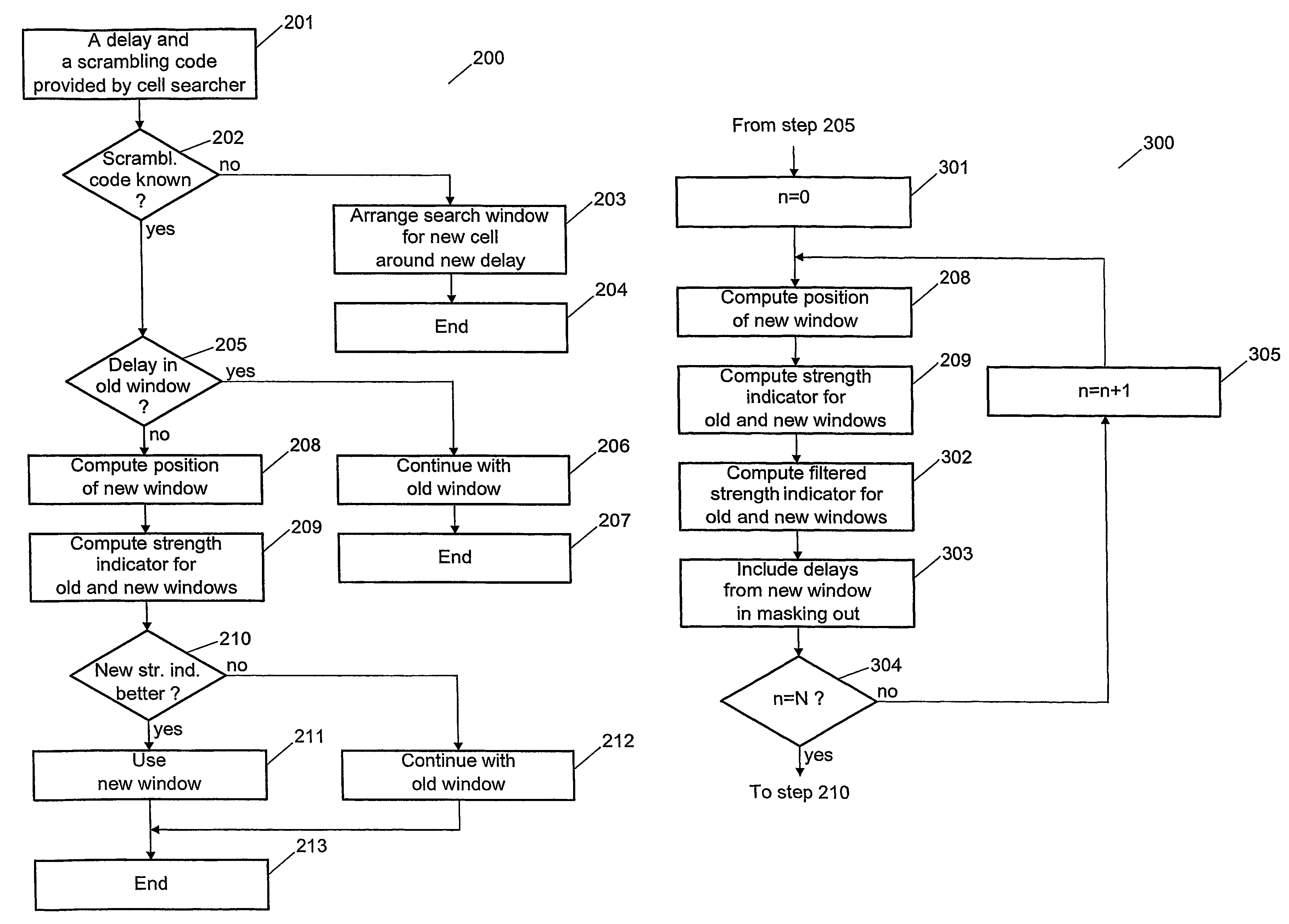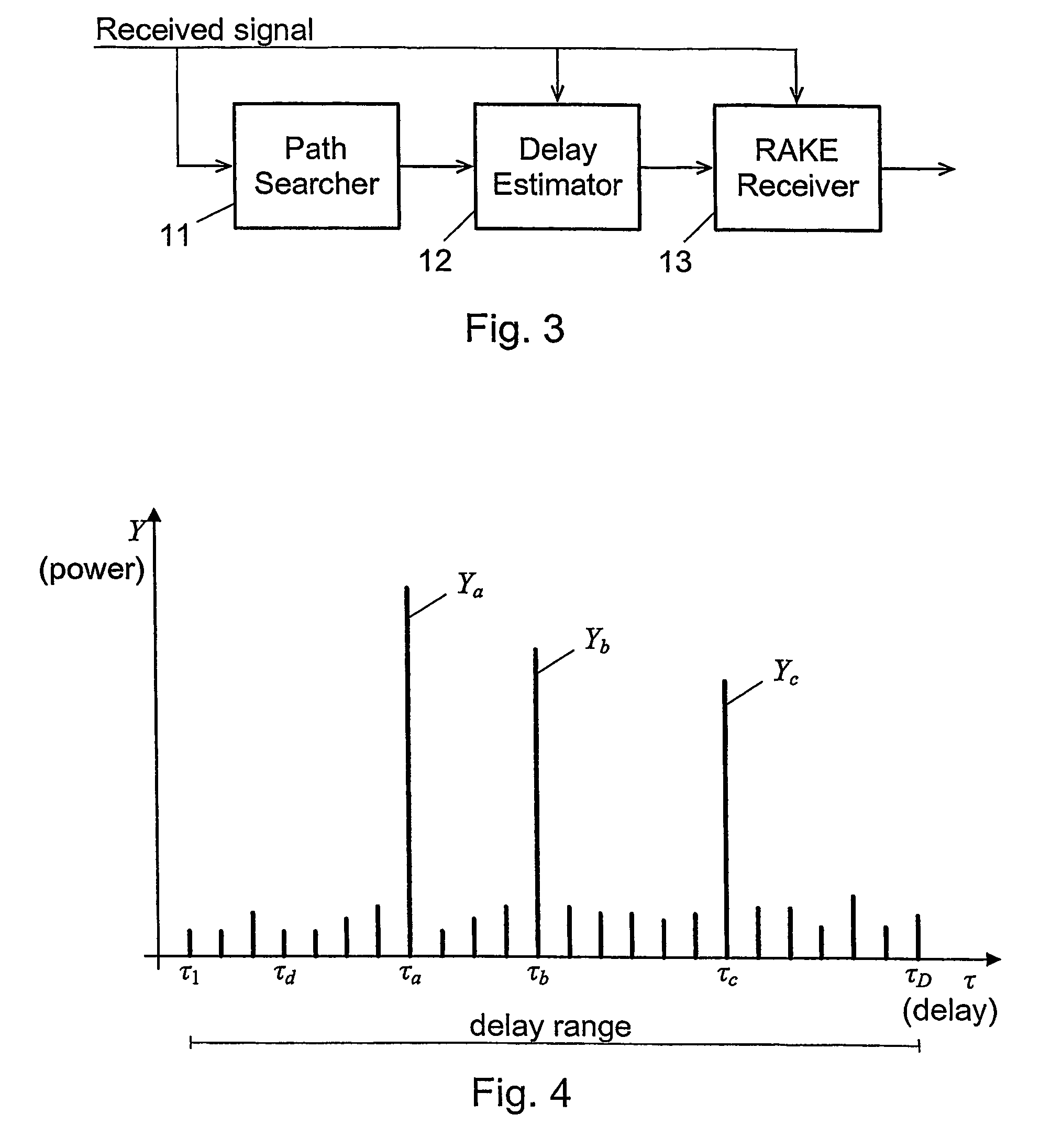Positioning of a path searcher window in a CDMA receiver
a searcher window and receiver technology, applied in the field of timevarying fading radio channels for detecting multipath components, can solve the problems of fading, interference in the receiver, and and achieve the effect of significant reduction of the magnitude or fading of the path gain for the path
- Summary
- Abstract
- Description
- Claims
- Application Information
AI Technical Summary
Benefits of technology
Problems solved by technology
Method used
Image
Examples
Embodiment Construction
[0048]FIG. 1 shows a situation in which a base station 1 and a mobile station 2 of a wireless communications system communicate with each other. As an example, a signal transmitted from the base station 1 is received by the mobile station 2. However, the transmitted signal travels along multiple paths from the base station to the mobile station. In this case there is a direct and unobstructed propagation path 3, but in addition to this direct path, reflections from objects in the surroundings cause a number of indirect paths to exist. Two such paths are shown in the figure. One indirect path 4 is reflected from a house 5, while another path 6 is caused by reflection from another building 7.
[0049]Since the part of a signal transmitted via one of the indirect paths 4 and 6 has to travel a longer distance to arrive at the mobile station 2, compared to the part of the signal travelling via the direct path 3, multiple instances of the same signal will be received by the mobile station 2 ...
PUM
 Login to View More
Login to View More Abstract
Description
Claims
Application Information
 Login to View More
Login to View More - R&D
- Intellectual Property
- Life Sciences
- Materials
- Tech Scout
- Unparalleled Data Quality
- Higher Quality Content
- 60% Fewer Hallucinations
Browse by: Latest US Patents, China's latest patents, Technical Efficacy Thesaurus, Application Domain, Technology Topic, Popular Technical Reports.
© 2025 PatSnap. All rights reserved.Legal|Privacy policy|Modern Slavery Act Transparency Statement|Sitemap|About US| Contact US: help@patsnap.com



